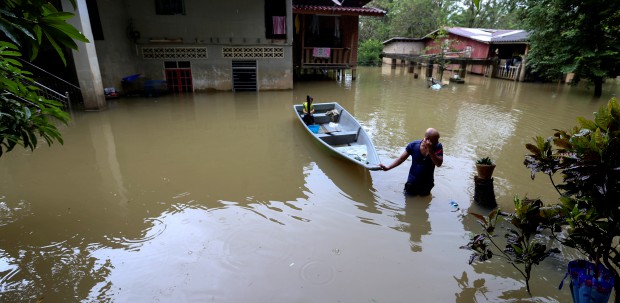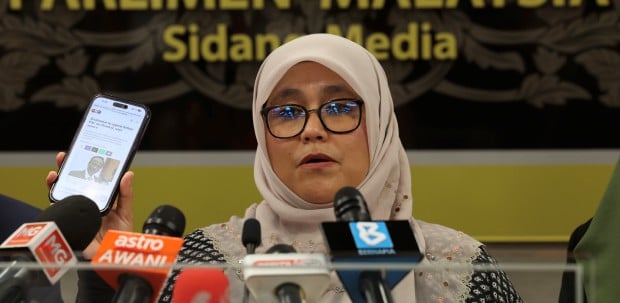HERE'S a novel idea to make the floundering National Flood Forecasting and Warning Programme (PRAB) work.
Simply uninstall the failed RM129 million first phase of the system and replace it with a crack team of staff members stationed at all flood hotspots nationwide.
The staff members, rotating on an eight-hour shift, can be quickly trained to monitor rising waters. But the best training they get is common sense: the moment they wade through 2cm of water inside their river stations, they punch the emergency alert button on their smartphone's Commercial Mobile Alert System app and notify their supervisor at the flood command centre.
Besides being fool-proof alerts, such employees — who could be plucked from the ranks of jaga kereta boys who habitually create a nuisance at public parking spaces — are taken off the streets and converted to useful public servants.
All the flood authorities need to do is outfit them in smart uniforms, rubber boots and caps, equip them with smartphones and yes, pay them decent wages. But, most importantly, gift them the dignity and commitment to be the first line of defence against dangerous rising waters.
Besides its effectiveness, it's also fantastically economical than that exorbitant RM129 million paid out to the incompetent PRAB contractor.
With flood forecasting accuracy rate at a measly 5.6 per cent, the Public Accounts Committee (PAC) has lamented that the system even failed to meet the intended PRAB target.
Furthermore, the communications system upgrades, from 3G to 4G network under the National Digital Network (Jendela) programme, had triggered data transmission issues from stations to gateways that persisted for more than three consecutive months.
Since the technology has faltered, our novel proposal for the stations to be manned by a flood-monitoring brigade isn't far-fetched. The PRAB blunder stems from the continuing exasperation with the Auditor-General's Report revealing financial leaks, abuse and mismanagement of government departments and agencies.
Even with the latest accounting, management and technological systems, the decades have proven that for as long as contracts are handed with shadowy motives, public funds inevitably flow into the gutters, panned and filtered by greed and corruption.
Since the PAC discovered weaknesses in the PRAB contract and a more astronomical cost in implementing the second phase, initially at RM385 million but which has spiked to RM522 million, the government must proceed judiciously. While the PAC issued six technical recommendations to rectify the problems, we were puzzled that the most obvious wasn't meted out: why didn't it haul up the tech contractor over the flubbed system?
For as long as the RM129 million snafu is unexplained, a caveat must be placed on the second phase of the contract. If satisfactory answers are still not forthcoming, then the proposed option to get back to the conventional way of looking out for floods will look more sensible by the day.





